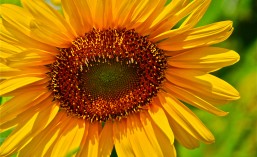I would hurl words into this darkness and wait for an echo,
and if an echo sounded, no matter how faintly,
I would send other words to tell, to march, to fight,
to create a sense of hunger for life that gnaws in us all.
~Richard Wright

In my post (#1379) last night I discussed the importance of sharing our stories. And because of some of the comments I got about that post, I want to touch on that subject one more time. Storytelling predates the written word, and these narratives have been shared in every culture in order to entertain, and/or educate, and/or preserve cultural values and views, and/or instill morals. Moreover, “in addition to being part of religious rituals, some archaeologist believe rock art may have served as a form of storytelling for many ancient cultures.” Symbols were also painted on the walls of caves as a way of remembering stories. Even complex tattooing has sometimes represented stories. “Stories have been carved, scratched, painted, printed or inked onto wood or bamboo, ivory and other bones, pottery, clay tablets, stone, palm-leaf books, skins (parchment), bark cloth, paper, silk, canvas and other textiles, recorded on film and stored electronically in digital form.” And who knows what other form they may take in the future. The reality is that human beings are storytelling organisms who lead storied lives. And often it is only in the attempt to tell the story that one realizes the value of the experience.
Tell it to your children, and let your children tell it to their children, and their children to the next generation. ~Joel 1:3 ✝
**Image found on Pinterest

